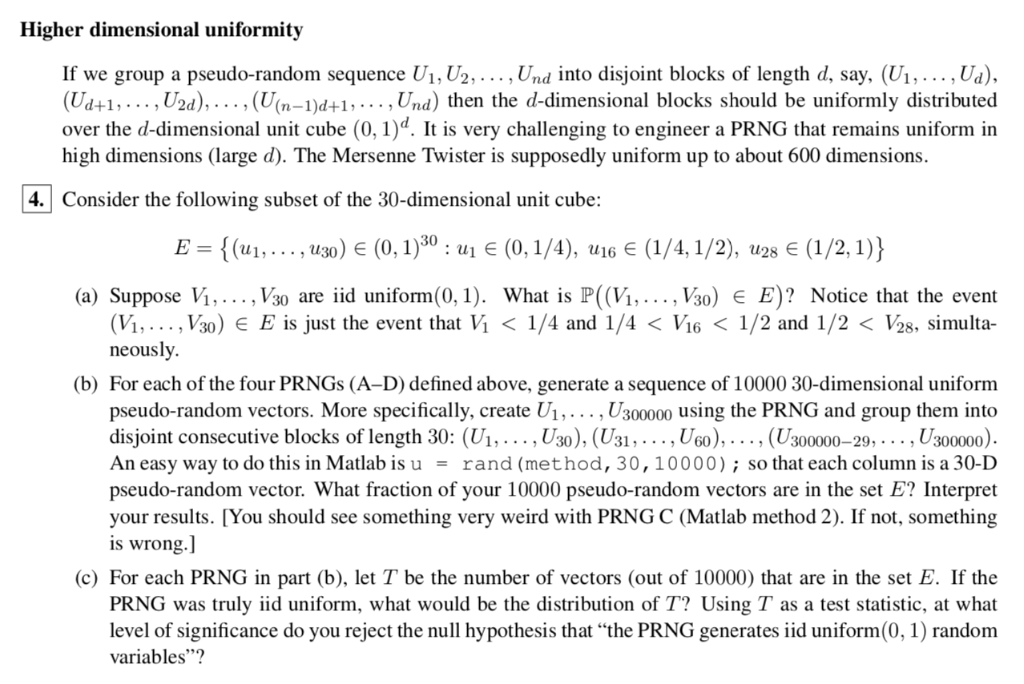

Different PRNGs in Matlab The latest version of Matlab has many different methods for creating pseudo-random uniform (0, 1) sequences. You can create multiple sequences (often called "streams") using different seeds or different methods and compare them. Here's how to create 3 different streams using 3 different methods. methodlRandStream (mcg16807') method2RandSt ream(swb2712') method3-RandStream ('mt 19937ar Method 1 was Matlab's default before 1995. It is a LCG with m 231 - 1 and a -75. It is too simple for modern applications. Method 2 was Matlab's default from 1995 to 2006. It is not a LCG and it is awful. I once spent many hours debugging before I realized that the problem was with this PRNG. Method 3 is the Mersenne Twister, which is currently a very popular PRNG and which is Matlab's default since 2007. Assuming you have a recent version of Matlab, then if you just use rand in Matlab, then you will get method 3 without having to specify anything. To generate an r c array of pseudo-random numbers using one of these streams and store it in the matrix U, type U-rand (method?, r,c); where you replace the ? with one of the numbers 1,2, or 3 to get the desired method. [On later homework sets, when we are finished exploring PRNGs and just want the best PRNG, you can use U-rand (r, c); without specifying a method. This uses the default method 3, in this case_which seems to be the best of Matlab's choices.] Demo Convince yourself that the PRNGs are deterministic. For example, create two copies of method 3, say method3a = Randstream ( ,mt 1 9937ar'); and method3b RandStream('mt 1 9 937ar' ); Now rand (method3a) and rand (method3b) should behave identically. Call them repeatedly to verify. Four different PRNGs A. The LCG that you created in problem 1 [after converting to (0, 1) by dividing each Rn by m] B. Matlab method 1 above. C. Matlab method 2 above. D. Matlab method 3 above. Higher dimensional uniformity If we group a pseudo-random sequence U1, U2, , Und into disjoint blocks of length d, say, (Ui, , Ud), U+ , U2d),.. . , (U(n-1)d+1,.. , Und) then the d-dimensional blocks should be uniformly distributed over the d-dimensional unit cube (0,1)d. It is very challenging to engineer a PRNG that remains uniform in high dimensions (large d). The Mersenne Twister is supposedly uniform up to about 600 dimensions. 4. Consider the following subset of the 30-dimensional unit cube: What is P((, , V30) E)? Notice that the event Suppose Vi, (V, ,V30) E E is just the event that Vi








